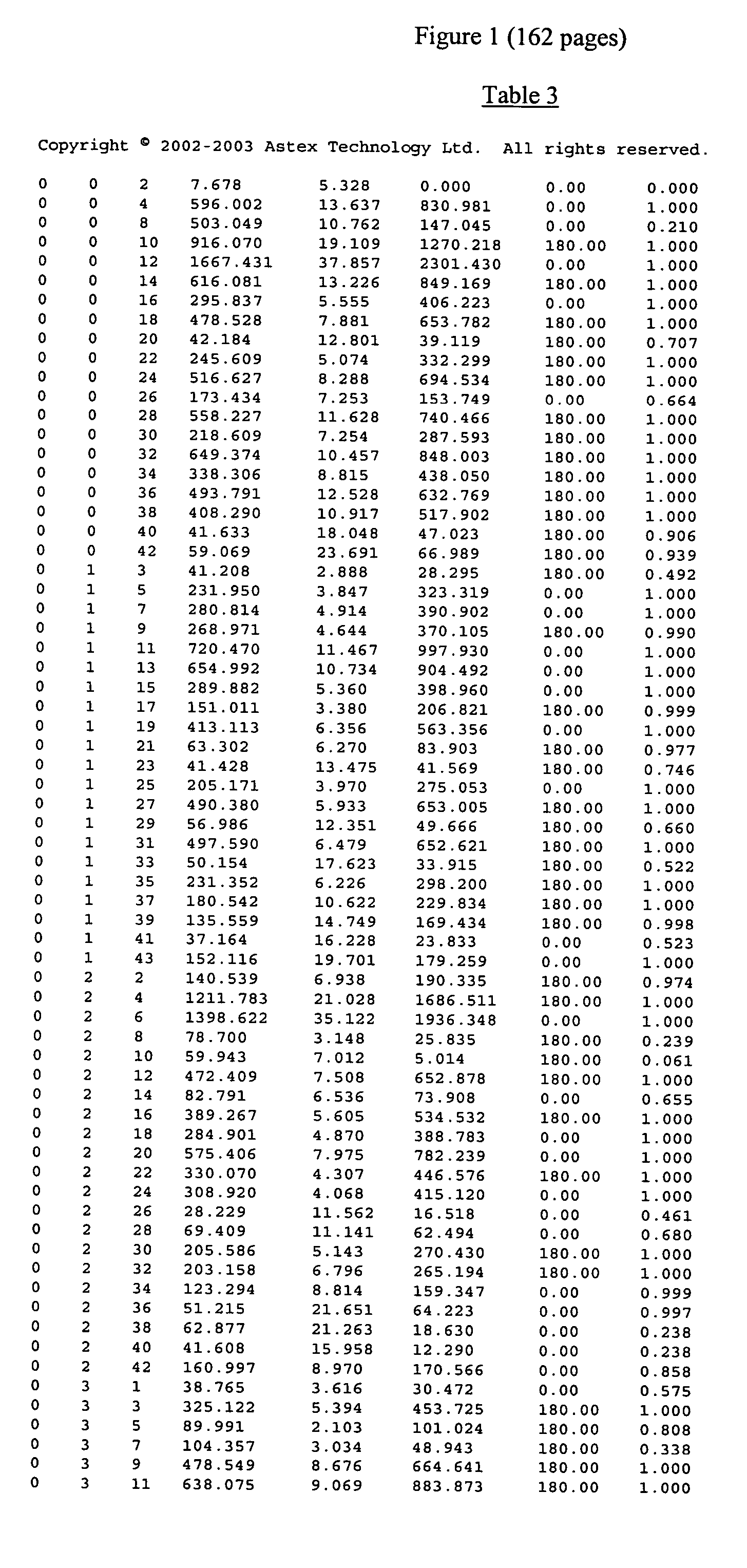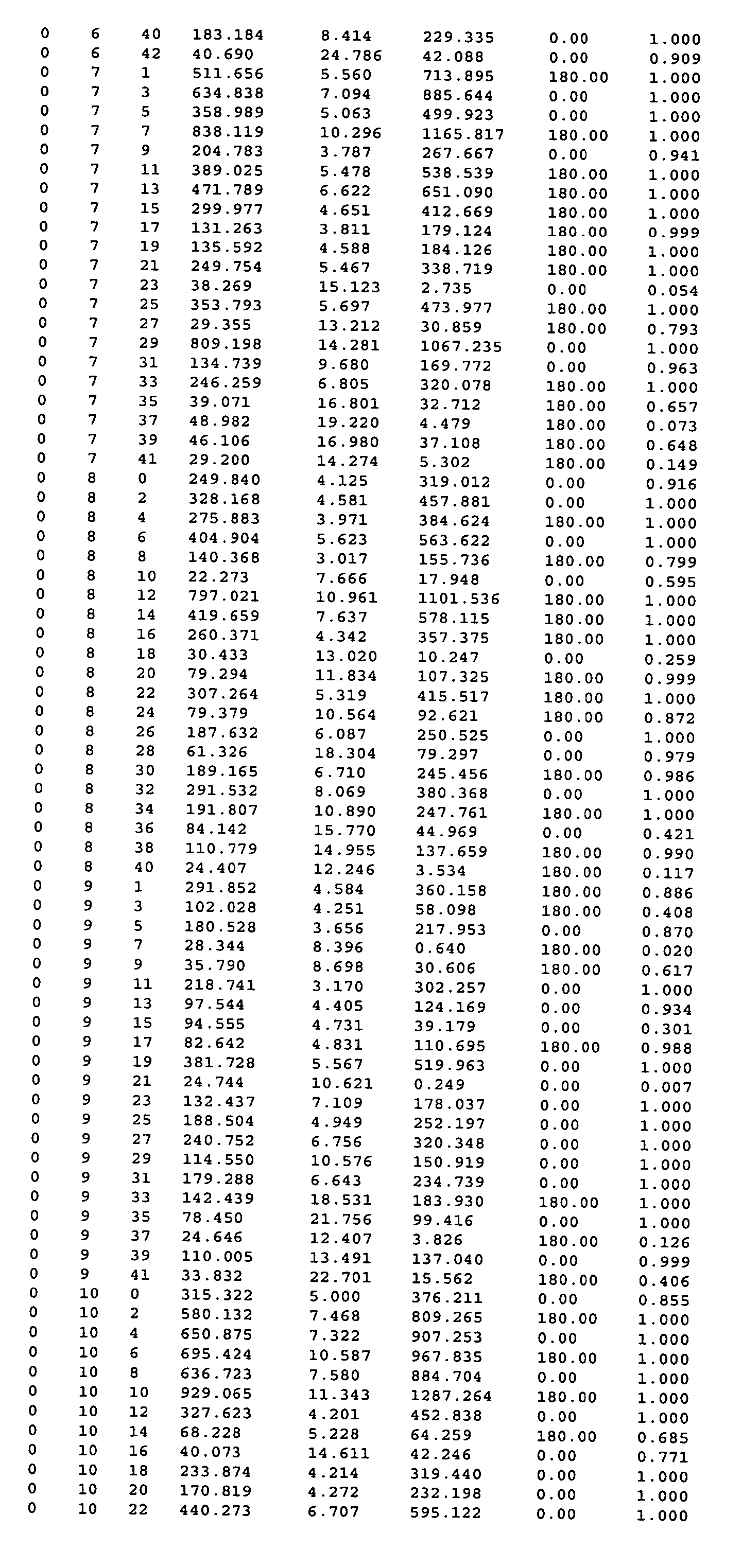Crystal structure of cytochrome P450
- Summary
- Abstract
- Description
- Claims
- Application Information
AI Technical Summary
Problems solved by technology
Method used
Image
Examples
Embodiment Construction
[0522] The invention is further described by the following numbered clauses:
[0523] 1. A method of obtaining a representation of the three dimensional structure of a crystal of cytochrome P450 3A4, which method comprises providing the data of at least columns 1, 2, 3, 6 and 7 of Table 3 and constructing an electron density map of said data.
[0524] 2. The method of clause 1 wherein said map is constructed by reference to the data of column 8 of said Table.
[0525] 3. The method of clause 1 or 2 wherein an initial model of 3A4 is fitted to said map.
[0526] 4. The method of clause 3 wherein said initial model is refined by reference to the data of columns 4 and 5 of said Table.
[0527] 5. The method of any one of the preceding clauses which further comprises calculating the three-dimensional coordinates of one or more atoms of 3A4 in said crystal to provide a first three dimensional structure of 3A4.
[0528] 6. The method of clause 5 wherein the structure is that of Table 5.
[0529] 7. The method...
PUM
| Property | Measurement | Unit |
|---|---|---|
| Fraction | aaaaa | aaaaa |
| Fraction | aaaaa | aaaaa |
| Angle | aaaaa | aaaaa |
Abstract
Description
Claims
Application Information
 Login to View More
Login to View More - R&D
- Intellectual Property
- Life Sciences
- Materials
- Tech Scout
- Unparalleled Data Quality
- Higher Quality Content
- 60% Fewer Hallucinations
Browse by: Latest US Patents, China's latest patents, Technical Efficacy Thesaurus, Application Domain, Technology Topic, Popular Technical Reports.
© 2025 PatSnap. All rights reserved.Legal|Privacy policy|Modern Slavery Act Transparency Statement|Sitemap|About US| Contact US: help@patsnap.com



